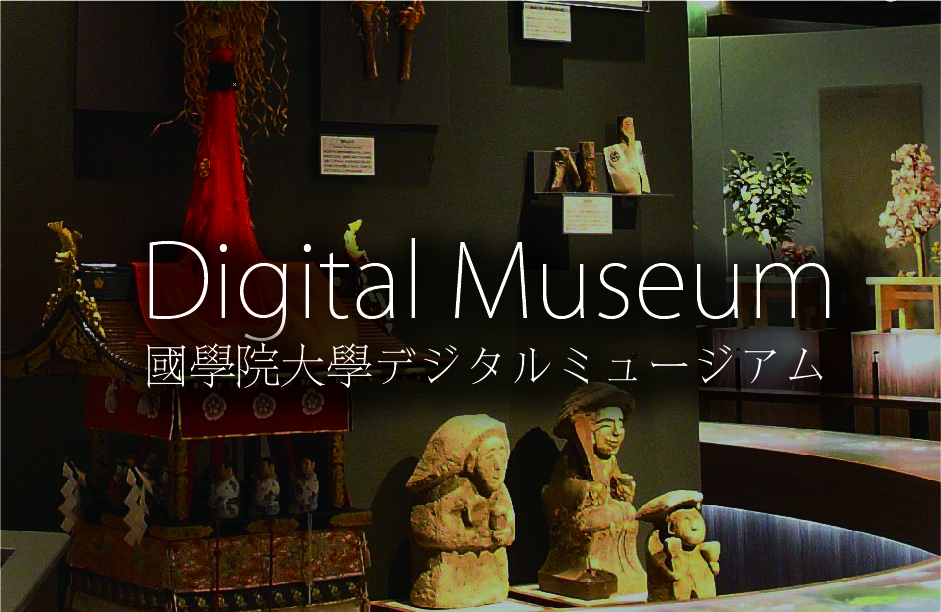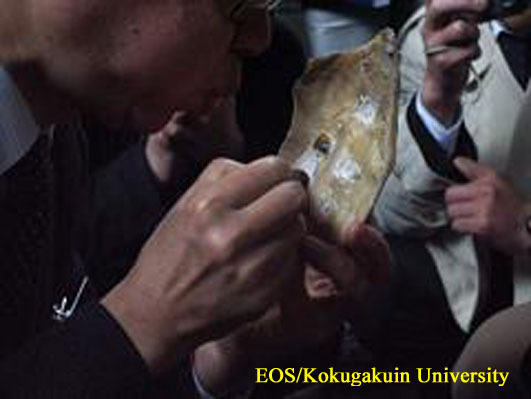- トップ
- Encyclopedia of Shinto
- Kiboku
Encyclopedia of Shinto
| Main Menu: | |
| Links: |
詳細表示 (Complete Article)
| カテゴリー1: | 6. Belief and Practice |
|---|---|
| カテゴリー2: | Divination and Supplication |
| Title | Kiboku |
| Text | "Tortoise-shell divination" (kiboku) is an oracular method practiced since archaic times, whereby a tortoise shell is heated then the outcome of future events is foretold by interpreting the pattern of cracking on the shell. It is also called kizei or kitaku. A popular practice in Yin dynasty China during the second millennium B.C., it is thought to have been transmitted to Japan via the ancient Korean kingdoms. "Tortoise-shell oracles" (bokukō), presumably dating back to the fifth century, were excavated from the Maguchi Cavern ruins in Miura City, Kanagawa Prefecture. To conduct tortoise-shell divination, the Department of Divinities (Jingikan) under the ritsuryō system" (see also Ritsuryō Jingikan) employed "priests specializing in divination" (urabe) from the provinces of Tsushima (present-day Tsushima Island), Iki (present-day Iki Island), and Izu (in present-day Shizuoka Prefecture). Born into the Izu Urabe family, Urabe Sukune Hiramaro (d. 881) held a succession of posts in the Department of Divinities. Because his descendants were respectively appointed Minister of Divinities and Major Deputy of Divinities and designated the administrators of the two shrines Yoshida jinja and Hirano jinja, the Urabe family split into the Yoshida and Hirano branches. Though the traditional practices of tortoise-shell divination gradually vanished from the Kamakura period onward, they were handed down in the Yoshida branch of the Urabe family and their documentary records exist even today. Traditional practices of tortoise-shell divination were also handed down at the Kashima jingū, Usa jingū, and Yahiko jinja shrines as well as in the provinces of Tsushima, Iki, and Izu, but only those of Tsushima have survived. References to methods of tortoise-shell divination can be found in such sources as Notes on Tortoise-Shell Divination ("Kibokushō"), believed to have been compiled by Urabe Masanobu in 1691 and "Procedures of Tortoise-Shell Divination by the Tsushima Province Urabe" (Tsushima no kuni urabe kiboku no shidai) within Ban Nobutomo (1773-1846)'s Seibokukō ("Study of Correct Divination"). According to these sources, a tortoise shell that has been extensively dried is sawn and polished into pot-shaped pentagular pieces roughly 10 cm high and 6 cm wide, then five thinly split sticks of bamboo called samashidake are lined up across the mouth of a pot filled with water. Prior to divination, the underside of the shell fragment is shaved and roughly polished to roughly a 1-cm thickness then engraved with rows of rectangular hollows, each about 1.5 cm long, 1 cm wide, and 0.8 cm deep. Within each hollow, a symbol (ト, ホ, カミ, エミ, or タメ) is written onto a "magical line" (machigata) drawn in ink or incised by knife. A branch of the hahaka tree (the ancient name for uwamizuzakura or Black Cherry) is burned in a purifying fire then placed against each of the machigata to scorch them. When the diviner intensifies the flame while blowing on it, "patterned cracking for divination" (urakata 占兆) begins appearing on the shell's upper side opposite the machigata. At that time, pouring cold water using the samashidake onto three spots of the shell's upper surface makes the urakata stand out more clearly, then the pattern of the cracking is interpreted to answer a question posed prior to heating the shell. Before beginning a tortoise-shell divination ceremony, the diviner undergoes ritual purification (kessai ) for several days and prays to the "deities of the divination courtyard" (uraniwa no kami ) who govern divination. On the day of the ritual, the diviner begins divination only after reciting norito to summon deities to the divination site. For the "Great Festival of Thanksgiving" (Daijōsai) of the Meiji period, tortoise-shell divination was performed for the "oracle of provincial counties" (kokugun bokujō) ritual and was stipulated in "Regulations Governing Access to the Throne" (Tōkyokurei ). It has since been performed at Daijōsai of the Taisho (1912-1926), Showa (1926-1989), and Heisei (1989-) eras. —Nakajima Hiroko |





